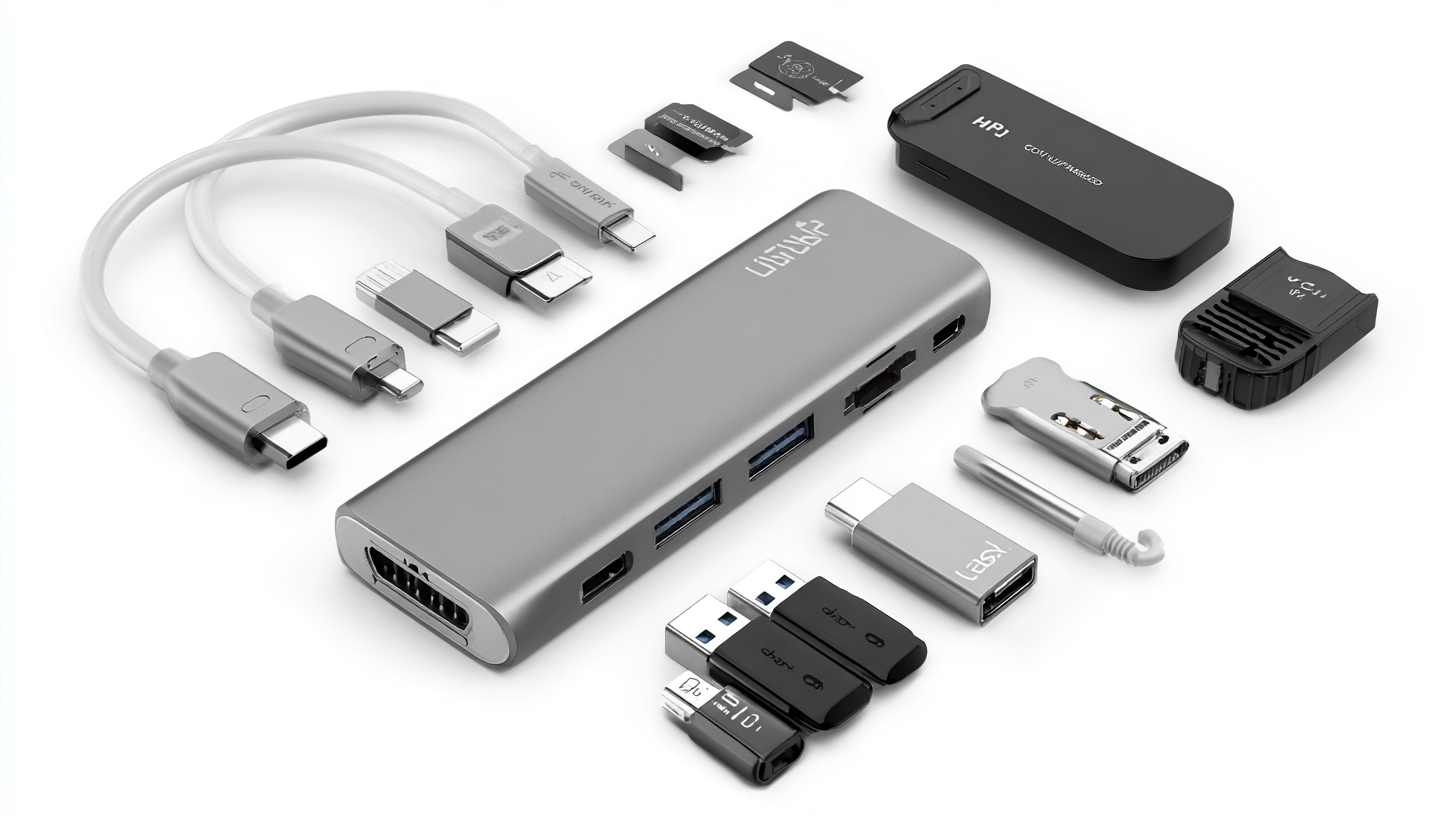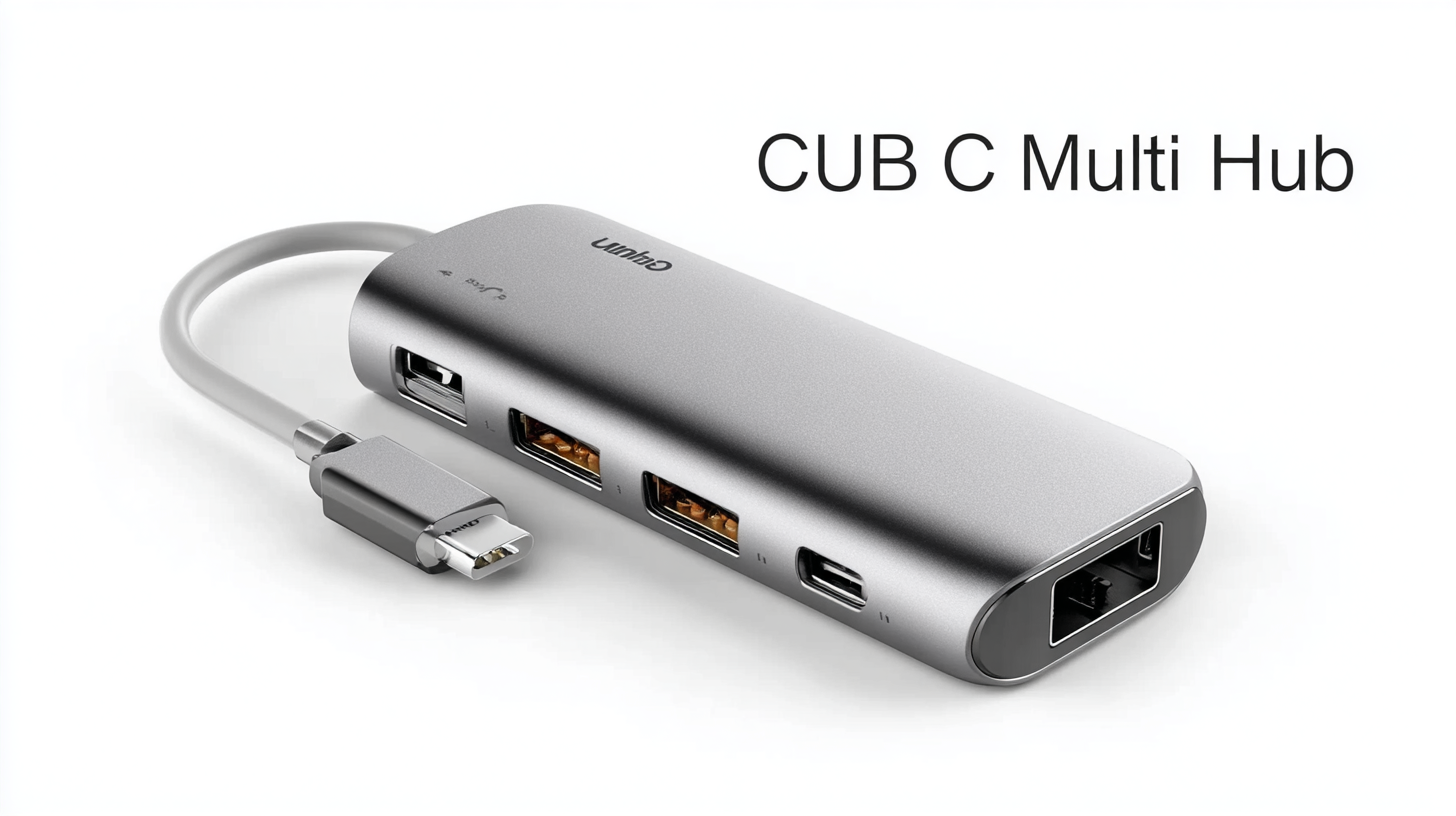
-
Home
-
Products
-
About Us
-
OEM&ODM
-
News
-
Contact Us
Inquiry
Form loading...

As the demand for versatile connectivity solutions continues to rise, the USB C Multiport Hub has emerged as a key player in the tech accessory landscape. According to a recent report by MarketsandMarkets, the USB hub market is expected to grow from $1.1 billion in 2020 to $1.7 billion by 2025, reflecting a CAGR of 8.2%. This increase is largely driven by the proliferation of laptops and mobile devices featuring USB-C ports, making the USB C Multiport Hub an essential tool for enhancing productivity and connectivity.

However, with the growing market comes the critical need for quality suppliers who can provide reliable and compliant products. Understanding the industry's import and export certifications is vital for businesses seeking to source these hubs effectively, ensuring they meet both performance expectations and regulatory standards. This guide aims to navigate the complexities of sourcing quality suppliers in the USB C Multiport Hub market while adhering to industry certifications.
When exploring the landscape of USB-C multiport hubs, it’s essential to understand the diverse types available and their distinct features. According to a recent report by Statista, the global market for USB-C accessories is projected to reach approximately $12 billion by 2025, reflecting the growing demand for versatile connectivity solutions. Among the most popular types of multiport hubs, you’ll find those designed for basic utility that typically include a combination of USB-A ports, HDMI output, and power delivery options. These hubs are ideal for everyday users who require minimal connectivity enhancements.
On the other hand, there are more advanced USB-C multiport hubs that cater to professional users, offering features such as Ethernet ports for stable internet connectivity and SD card readers for efficient data transfer from cameras. A 2023 industry analysis revealed that around 45% of professionals prefer USB-C hubs with integrated power delivery, enabling them to charge their devices while simultaneously connecting to multiple peripherals. This intersection of power and functionality not only enhances productivity but also streamlines the user experience, making it crucial for any potential buyer to consider their specific needs before selecting a hub.
When selecting the right USB C multiport hub, it's crucial to consider several key factors that could significantly impact performance and usability. According to a recent report by IDC, the global USB-C accessories market is expected to reach $20 billion by 2025, indicating a growing demand for reliable and high-quality products. This statistic highlights the importance of sourcing from reputable suppliers who adhere to industry standards, ensuring that the hubs you select can handle the necessary data transfer rates and power delivery capabilities.
One of the primary considerations should be the hub's compatibility with a wide range of devices. Research from Gartner shows that around 90% of laptops and smartphones will feature USB-C ports by 2023. Thus, opting for a multiport hub that supports various protocols—like Thunderbolt 3, HDMI, and USB 3.1—is vital for future-proofing your needs. Additionally, assessing the build quality and thermal performance is essential, as overheating can lead to performance throttling, ultimately affecting device longevity. A report by TechInsights revealed that over 25% of multiport hubs fail quality tests due to poor construction, underscoring the critical nature of supplier reliability in this competitive market.

In the rapidly evolving tech landscape, USB-C multiport hubs have become essential for seamless connectivity across devices. According to recent market research by Grand View Research, the global USB-C accessories market is projected to reach $5.5 billion by 2025, driven by the increasing adoption of USB-C in laptops, smartphones, and tablets. This highlights the growing consumer demand for quality multiport hubs that meet both functional and aesthetic needs.
When evaluating popular USB-C multiport hub brands, it's crucial to consider performance, compatibility, and design. Brands like Anker, Belkin, and HyperDrive have established themselves as leaders, each offering a range of products tailored for different user requirements. For example, Anker's PowerExpand series provides extensive connectivity options with robust data transfer rates, while Belkin focuses on sleek designs that complement premium devices. HyperDrive, on the other hand, offers innovative features like built-in storage solutions, making them ideal for professionals on the go. A comparative analysis shows that while performance may vary, user reviews frequently mention durability and speed as key differentiators among these brands, emphasizing the importance of sourcing from reliable suppliers to ensure quality.
When selecting a USB C multiport hub, understanding compatibility and use cases is crucial. Multiport hubs are designed to provide various ports that expand the connectivity options for devices equipped with USB-C interfaces. According to a report from Allied Market Research, the global USB hub market is expected to reach $5 billion by 2025, illustrating the rising demand for such products. Users should consider their specific needs, as hubs can differ vastly in terms of port configurations, charging capabilities, and data transfer speeds.
**Tip:** Always check the hub's specifications against your devices to ensure compatibility. For instance, if you plan to connect multiple peripherals or external displays, look for hubs that support DisplayPort Alternate Mode and offer sufficient power delivery (PD) for charging.
Different use cases warrant different types of hubs. Gamers may benefit from hubs with multiple USB-A ports for peripherals, while professionals may prefer multiport hubs that include Ethernet ports for stable internet connections. With the growing trend of remote work, the demand for reliable connectivity solutions has surged. A Smart Insights report highlights that 90% of remote workers use two or more screens, highlighting the necessity for robust multiport hubs.
**Tip:** Opt for hubs that offer a combination of ports, including HDMI, USB-A, and SD card slots, to maximize versatility in your work setup. Always research the manufacturer’s reputation and user reviews to find a reliable supplier.
| Feature | Specification | Compatibility | Use Case |
|---|---|---|---|
| Ports | USB-C, HDMI, USB 3.0, Ethernet | Laptops, Tablets, Smartphones | Media Streaming, Data Transfer |
| Power Delivery | Up to 100W | USB-C supported devices | Charging while using hub |
| Data Transfer Speed | Up to 5Gbps | USB 3.0 compatible devices | High-speed file transfers |
| Video Output | 4K at 30Hz | HDMI compatible displays | Connecting to external monitors |
| Weight | Approx. 200g | Portable devices | Travel-friendly usage |
When exploring the world of USB-C multiport hubs, enhancing your setup with the right additional accessories can dramatically improve your overall experience. Whether you are gaming on the go or need to boost your productivity while working, having the right peripherals can make all the difference. For instance, consider investing in a high-performance docking station that supports multiple functionalities, such as charging, data transfer, and video output, all at once. This ensures that your devices are ready to tackle any task without hassle.

More recently, innovative multiport hubs with upgraded features have been introduced, catering to the demands of modern users. From docks that deliver robust power delivery to those equipped with advanced video output capabilities, there’s a vast selection to choose from. Accessories like external displays and high-speed USB drives can further enhance the capabilities of your USB-C hub, allowing you to multitask with ease. As you search for the best USB-C multiport hub, consider how these additional accessories can complement your setup and elevate your user experience.